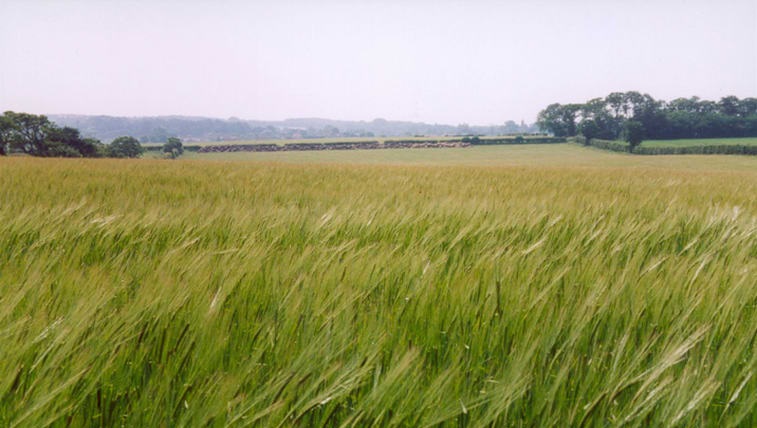
After one of the mildest winters on record growers must resist the temptation to drill spring crops too soon and risk compromising weed control and emergence, leading agronomy firm Hutchinsons warns.
Soil temperatures are several degrees above normal at 6-8° Celsius even on heavier land, so there is scope for drilling earlier than normal, providing crops can grow strongly and conditions allow pre-emergence herbicides to be applied effectively, says technical manager Dick Neale.
Forcing seedbeds when underlying soil conditions are too wet or drilling ahead of a return to cold weather results in poor establishment and risks weed populations outpacing crops. With so few chemical control options available in spring crops, particularly post-emergence, such a situation must be avoided, he warns.
“For any spring crop, the key is not to drill too early. Be patient and wait for soils to warm up and dry out enough for a good seedbed and for crops to germinate and grow ahead of any emerging weeds.
“Remember weeds such as black-grass germinate as soon as soil is moved, so ideally the first and only cultivation should be with the drill.”
Barley and beans are the two main spring crops grown and each has its own challenges in terms of weed control.
Spring barley
The competitiveness of spring barley and wide choice of approved chemistry means there are few major concerns for weed control, says Mr Neale.
But even so, it is still worth waiting until conditions are right to ensure seedbed losses do not undermine weed control, especially where spring barley is grown on heavy land for black-grass control.
“Herbicides require a partnership with a good competitive crop to work well, so don’t underestimate field losses. You’ve realistically got to be working on 30% losses or 70% plant establishment on heavy, cold soils, which means sowing 500seeds/m2 to get the 350-400 established plants/m2 needed to control black-grass effectively.”
Residual herbicides should work well when applied during the cooler, damper conditions associated with early spring drilling, but rolling seedbeds post-drilling can help maximise efficacy, he notes.
“The type, rate and mix of pre-em will be determined by the weed spectrum of the land you’re on.”
Broadleaf weeds are relatively straightforward to control in spring barley given the range of sulfonylurea-based herbicides, diflufenican, or pre-emergence products based on flufenacet or pendimethalin, notes Norfolk-based Hutchinsons agronomist Alistair Shepherd.
“Options are a lot more restricted in spring wheat and pulses though, so any spring cropping must be planned carefully.”
He reminds growers to factor possible following crop or cultivation restrictions into product choice, especially where sulfonylurea-based products are used in spring cereals for example.
Allowing weed flushes to emerge and be sprayed off with glyphosate before drilling can be a good way of reducing the reliance on limited in-crop chemistry and allows product choice to be more accurately targeted to the weed spectrum present, Mr Shepherd continues.
“In many spring crops this is driven by polygonum germination, which is determined by day length, so be patient and don’t rush in.”
Pre-emergence herbicides are key to any effective weed control strategy, especially where herbicide resistance is present, he adds. “For example, if you’ve got poppies with sulfonylurea resistance then a pendimethalin-based pre-em can help. Look carefully at exactly what needs controlling and which actives are best placed to help.”
Winter oats are another weed to watch, especially if reduced sensitivity to fops and dims is present, Mr Neale adds. Pinoxaden is the only option approved for wild oat control in spring barley and growers need to be sure it will work otherwise undue pressure will fall on residuals to deliver control, he says.
Spring beans
Weed control in spring beans is more complicated than in barley given the crop is naturally less competitive and there are fewer approved herbicide options.
Delaying sowing until soils conditions are warm enough for rapid establishment is crucial and growers should also improve crop competitiveness by using higher seed rates, Mr Neale says.
“Many people traditionally sow 40-45 seeds/m2, but that’s the established plant population you should aim for. Field losses can easily be 15-20% with early sowing and perhaps 5-10% for later crops, which means sowing nearer 50 seeds when conditions are good and perhaps 70/m2 in poor seedbeds.”
Pulses are particularly susceptible to poor seedbeds, so growers must avoid forcing cultivations and drilling, adds Mr Shepherd.
He acknowledges there is a fine balance between drilling later into warm soils to help crops establish quickly, versus the increased risk of rapidly drying soils reducing the effectiveness of pre-emergence herbicides, which are so important for weed control in spring crops.
Encouraging a flush of weeds that is sprayed off with glyphosate before drilling is a good option when conditions allow, he notes. “But really it comes down to careful planning and managing autumn cultivations to create the best possible conditions for establishing spring crops.”
Mr Neale adds: “Post-emergence options in spring beans are pretty poor so compromising the full dose of pre-em is definitely a no-no. It’s still worth using a pre-em where crops are drilled later, but don’t spend a fortune on it.”
Bentazone is the main post-em option in spring beans
Where growers are worried about pre-em efficacy, Mr Neale says spring peas may be a better alternative to beans, as they offer an extra approved herbicide option in the form of MCPB. “It’s only one extra product, but can make all the difference to the level of weed control that can be achieved.”
Pea drilling can also be delayed until April which allows time for a flush of black-grass sprayed off ahead of drilling, he says.
